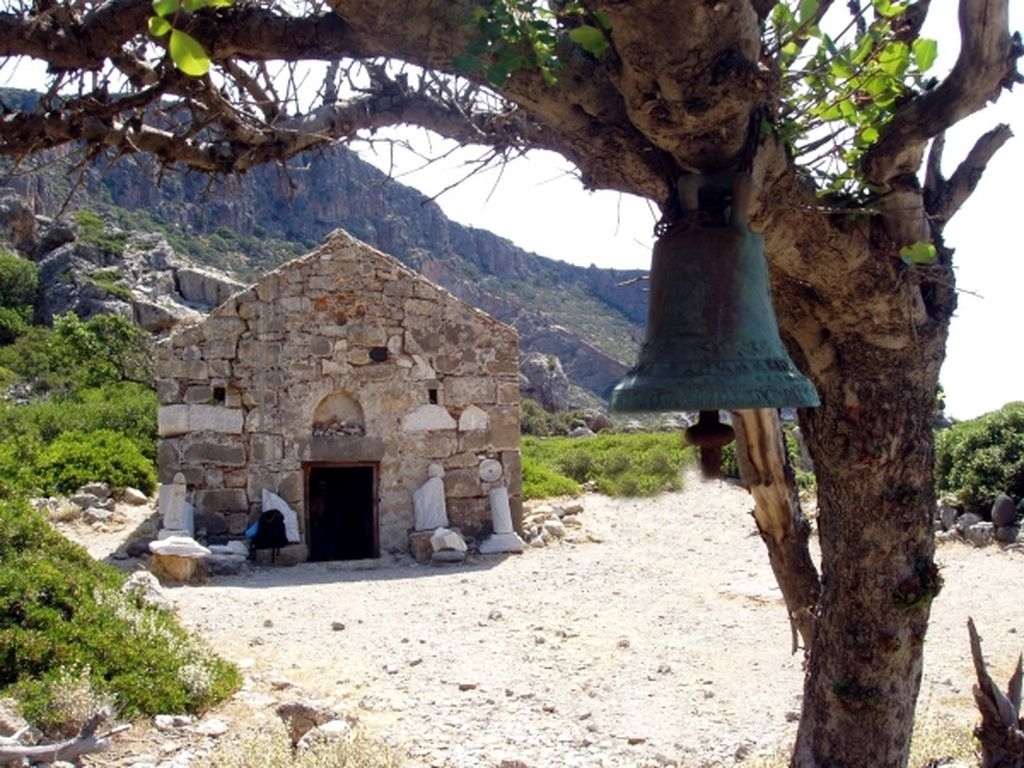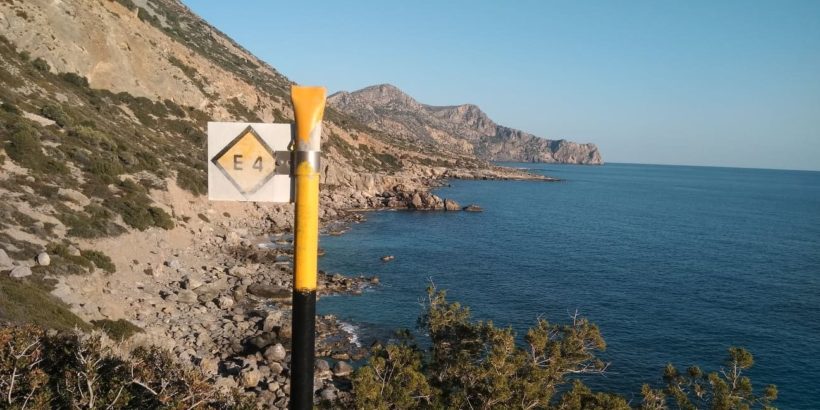It is located in Agios Kirkos Bay between Paleochora and Sougia (well, closer to Sougia than to Paleochora). A small valley near the sea surrounded by rocky hills makes an impressive landscape – as almost always here in the southwest of the island.

Ancient Lissos – between Paleochora and Sougia.
Close to the sea the width of the valley is around 150 meters – here is also the St. Mary Church, which appears to have been built on the site of an ancient temple. 1957/1958 the first excavations were carried out by the Society for Archeology of Western Crete.
Valuable remains of buildings and objects were discovered suggesting the existence of a temple of the god Asklepius. In 1957, a small beautiful Asclepius Temple was indeed discovered. The internationally known archaeologist Nikolaos Platonas reports that the following can be seen in Lissos: remains of a polygonal wall, parts of buildings, remains of thermal baths, ruins of granite chapels, a small theater from the Greco-Roman era, baths for the therapy of sick people, a source with fountain and many labeled column-bases.
The mountain slopes around the small valley of Agios Kirkos are full of tombs which, however, are not carved into the rocks, but each is a separate small building. Inside, they are up to 3 m long and approx. 2 m wide. It is also about 2 meters to the apex of the vaulted ceilings. The entrances to these tombs which are often even two stories high, are so small that just one (not too big) person can fit through. Many of these tombs are plastered inside and in very good condition – these tombs are considered the most impressive of the whole island.
Lisso’s heyday
Lissos‘ heyday was probably about 40 BC during the Roman Empire. There was a small Doric-style temple built on large, hewn stones. During the excavations, a good number of large and small sacrificial statues were found, representing the god Asklepios, the goddess „Ygia“ and Pluton. Most were found without a head; their manufacture is traced back to the end of the Hellenistic and Greco-Roman times. Most of the characters are classic.

The small chapel in Lissos.
Parts of the friezes and arches from the Temple of Asklepios can still be visited. A little further down there is a water system that was probably once connected to the source of the sanctuary. There were also many smaller, golden objects that testify the wealth of this small town and can be admired today in the archaeological museums of Chania and Heraklion.
Famous mineral springs
Lissos also became famous for its healing springs and developed into an important water spa with visitors from all over Crete and even from the northern coast of Africa.
The town always maintained good relationships with other towns in the western part of Crete, such as Yrtakina, Siia, Eliros or Kalamadi – perhaps it even served as a port for the town of Yrtakina.
The hike from Paleochora takes about 3.5 hours, from Sougia 1.5 hours.
Take enough water with you!

